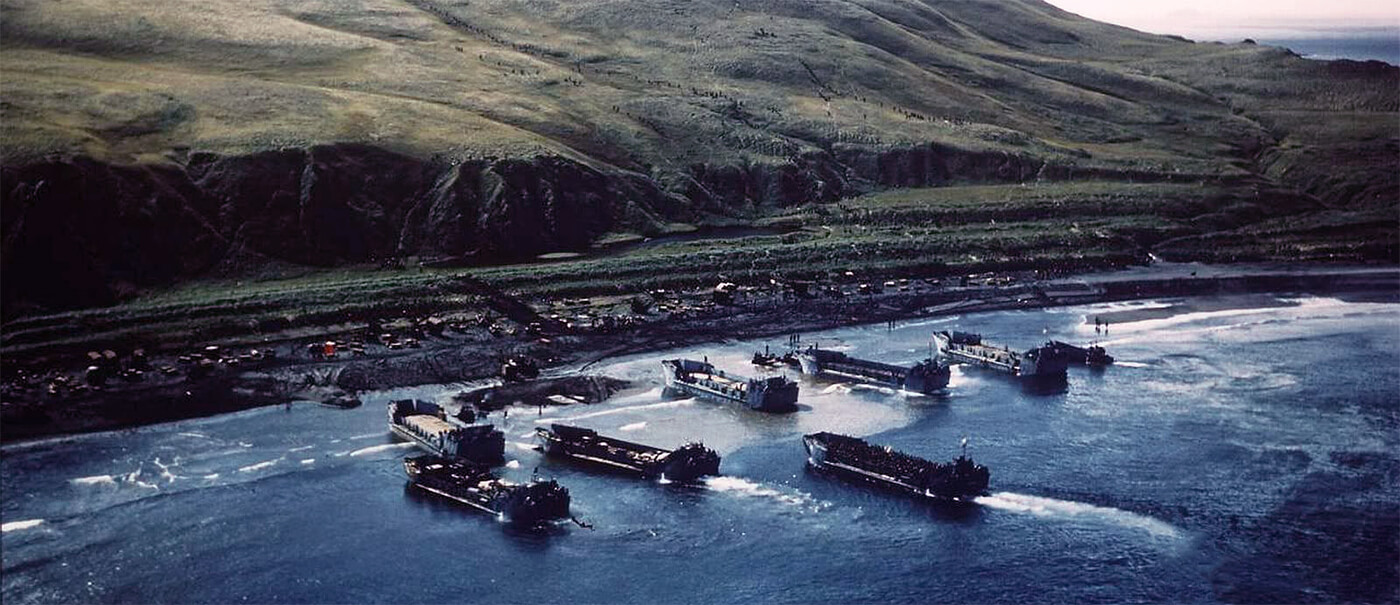| Special Forces Operations in October 1943 |
| October 3rd, 1943 – October 8th, 1943 |
| Operation Devon |
| Commandos, Royal Marine Commandos, Special Raiding Squadron. |
| No. 3 Army Commando, No. 40 (RM) Commando, Special Raiding Squadron. Their mission is to capture Termoli, and with it unhinging the German defensive position along the river Bifurno. The Commandos of the 1st Special Service Brigade complete their objective on the first day and hold the town of Termoli for another five days against heavy attacks of the Germans until reinforcements arrive. The 1st Special Service Brigade alone suffers three officers and twenty-nine other ranks killed, seven officers and seventy-eight other ranks are wounded, and one officer and twenty-two other ranks are missing. |
| October 10th, 1943 – January 1944 |
| Operation Grebe |
| Norwegian Independent Company 1, Special Operations Executive |
| Six-man party (T. Hoff, J. Beck, H. Løkken, H. Storhaug, A. Øvergård and A. Graven) of the Norwegian Independent Company 1 (Kompani Linge) as part of a Special Operations Executive operation. Their mission is to reconnoitre the Røros and Dovre railways so when needed, German troop movement could be disturbed. The party parachute into Norway, but three of the party are killed on landing and the remaining three are forced to abandon the mission and escape to neutral Sweden, where they remain until January 1944. |
| October 23rd, 1943 – October 25th, 1943 |
| Prisoner Uprise at Levitha, Aegean Sea, Greece |
| Long Range Desert Group, 1. Gebirgs Division |
| Half Patrol A Squadron (Captain Jack Sutherland), Half Patrol B Squadron (Captain John Olivey). Fifty men in total are to subdue a German Prisoner of War uprise on the Greek Island of Levitha. Once the Long Range Desert Group (LRDG) arrives on Leros, they are tasked with reconnaissance patrols to monitor enemy activities. On October 6th, 1943, the New Zealand T1 Patrol, led by Captain Charles Saxton, reports a German convoy, which the Royal Air Force destroys the next day near Stampalia, west of Rhodes. Fewer than one hundred of the 1,000 soldiers and seamen survive the attack and are captured by the Long Range Desert Group. HMS Hedgehog is sent to collect some survivors but develops engine trouble and puts in at Levitha. When radio contact is lost, the British assume an uprising and dispatch the LRDG, led by Captain John Olivey, to quell it. On October 23rd, 1943, Olforce, comprising fifty men, practices rowing and prepares for the mission. They land in two groups on Levitha, with Olivey’s men on the southwest and Lieutenant Sutherland’s on the northeast. The mission begins ominously, but Olivey’s group reaches an ancient fort without incident. However, unknown to Olivey, German reinforcements, elements of the 1. Gebirgs Division, have been called in. On October 24th, 1943, Captain Olivey’s patrol comes under fire, and the situation worsens as German forces, including mountain troops, intensify their attacks. Corporal Thomas Bradfield is wounded, and Olivey orders a countermove to prevent encirclement. Despite capturing three German prisoners, the Long Range Desert Group’s position is precarious, and they face continuous attacks. As the day progresses, the Germans capture Lieutenant Kay and his men. Captain Olivey narrowly escapes capture and, with Rhodesian soldier Karrikie Rupping, hides until sundown. Meanwhile, Captain Sutherland’s patrol repels attacks and captures Germans but is forced to negotiate a ceasefire due to rising casualties and dwindling ammunition. By dusk, the situation for the Long Range Desert Group is dire. Captain Sutherland arranges a ceasefire to evacuate the wounded. The Germans soon capture Sutherland’s men. Olivey and Rupping evade capture, make their way to the beach, and wait for the motor launch. On October 25th, 1943, Olivey and a few others are rescued by the motor launch. The Unit has lost forty-three men in this operation. German losses are unknown. |

